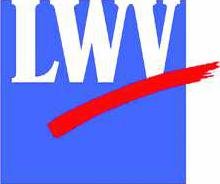With a City of Great Bend fiscal outlook better than anticipated in the COVID-19 pandemic era, the City Council Monday night approved the 2021 operating budget. This action followed a public hearing on the spending package.
Although the council has returned to meetings closed to the public (except for the live stream) due to COVID-19 case increases, the exception was made for the hearing. Accommodations were made to allow for a larger crowd in the council’s City Hall chamber.
In a nutshell, the budget authority for the upcoming fiscal year that begins Jan. 1, 2021, totals $26,758,000, down about $420,000 from the previous year. This is funded by a mill levy that basically unchanged from 2020 (it fell a tick from 53.868 to 53.857).
The budget was published Aug. 5. It needs to be certified by the Barton County Clerk by Aug. 25 and sent on to the State of Kansas.
For the second year in a row, the city valuation decreased. That means each mill generates less revenue.
The 2021 valuation is $103,098,563, down $2,360,596 from 2020. So each mill brings in roughly $103,000 (One mill is one dollar per $1,000 dollars of assessed value).
Although this had less to do with the pandemic and more to do with a utility company’s infrastructure project, it has an impact none the less.
In addition to the city staff’s normal day-to-day maintenance, upkeep and providing safety and welfare to the general public, this balanced budget continues to reflect the priorities outlined in the three-year strategic plan and fully funds all recommended programs, City Administrator Kendal Francis said. Work on the budget started in the spring and has included input from department heads and a council session in May.
The city’s myriad sales taxes and property tax account for half the budget. The balance comes from sewer and water charges, police fines, ambulance service, and other fees and taxes.
The city’s budget is made up of a host of funds supporting the various departments, with the general fund being the largest. Included in the budget across all these funds are:
• A 3% pay increase for all departments.
• Filling an assistant city administrator post and public works position.
• No increases for employees insurance costs.
• Increased contributions to employee retirement funds.
• Improvements to Heizer Park, including a possible soccer field.
• Improvements to ball fields.
• Outdoor basketball courts.
• Continued contributions to a fund to replace the Police Department building.
• A storm water master plan.
• A mixed bag of funding levels for the outside agencies that receive city money. Some will see an increase, some a decrease and some no changes at all.
A few topics emerged repeatedly as Francis walked the council through the 104-page budget book – potholes, the conditions of city streets, and the condition of other city properties, such as the cemeteries.
During a July 13 budget work session, Francis said “things were doom and gloom” in June. Sales tax revenues (which make up about a quarter of the city’s income) were projected to plummet 25%.
The city’s myriad sales taxes and property tax account for half the budget. The balance comes from sewer and water charges, police fines, ambulance service, and other fees and taxes.
“But, as time went on, we had some very favorable sales tax totals in the city,” Francis said. In fact, in April (the most recent numbers available), the total was slightly higher than in April 2020, with May expected to repeat that performance.
“One month ago, we were looking at cutting expenses,” he said. But, now, it appears the city will be able to carry over more money than anticipated.
“We’re still going to be very fiscally conservative. This pandemic isn’t going away,” he said. “We’re only going to spend what we need to spend.”





